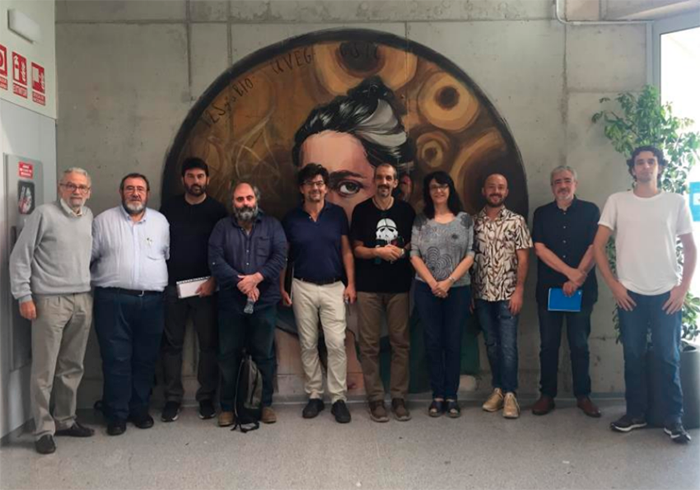
With the creation of this unit, the I2SysBio, a mixed centre of the CSIC and the Universitat de València, seeks to strengthen the interdisciplinary nature of the institute, making it possible for physicists and mathematicians to approach fundamental biological problems.
The Institute for Integrative Systems Biology (I2SysBio), mixed centre of the Spanish Research Council (CSIC) and the Universitat de València, with the collaboration of the Centre de Recerca Matemàtica (CRM, Mathematical Research Centre) organized last Friday a kick-off meeting, on the occasion of the creation of the new associated unit Dynamical Systems and Computational Virology (DySCoVir). The session, in which different conferences and lectures took place, counted with the presentation of José Luis García, I2SysBio Director, and Lluís Alsedà, CRM Director, a consortium of the Institute for Catalan Studies, the Government of Catalunya and the Autonomous University of Barcelona.
This new unit is coordinated by researchers Santiago Elena, CSIC research Professor at the Institute of Integrative Systems Biology (I2SysBio, CSIC - Universitat de València); Tomás Alarcón, research Professor at the Catalan Institution for Research and Advanced Studies (ICREA); and Josep Sardanyés, researcher for the Ramón y Cajal programme at the Centre de Recerca Matemàtica (CRM).
The institutional delegate of the CSIC in the Valencian Community, Juan Fuster, pointed out that "this associated unit represents a new example of collaboration and integration in which researchers from two different disciplines share efforts to achieve results that they could not achieve separately".
For his part, José Luis García, director of I2SysBio, added that “the associated units of the CSIC aim to increase the transfer of knowledge between institutions that share common interests, such as in this case the application of mathematics to biological phenomena. Undoubtedly, this collaboration between the CRM and I2SysBio amply meets this objective and will strengthen the research of both institutions. This, in turn, is the first example of I2SysBio's interest in expanding interactions with other research centres.”
Santiago Elena, coordinator of the Associated Unit at I2SysBio, explains that “the associated unit arises to give a formal structure and to facilitate an existing cooperation between the group of Evolutionary Virology of Systems of I2SysBio and the group of Nonlinear Dynamic Systems and Evolution directed by Josep Sardanyés in the CRM. The associated unit will allow this collaboration to be extended to other groups from both institutions. In addition, the associated unit fills a gap that I2SysBio had until now, providing us with fundamental support in applied mathematics, modelling of complex systems and big-data analysis.
The creation of this associated unit is based on a scientific collaboration in recent years that has explored a complementarity between computational and experimental approaches to the study of the evolutionary dynamics of RNA viruses. This complementation has been bidirectional.
In the direction from mathematics to virology, through the development of mathematical and simulation models that have generated contrastable hypotheses about the dynamic properties of viral populations that have subsequently been evaluated experimentally in the laboratory. In the direction from virology to mathematics, when experimental observations were not intuitive, through the design of simulation models that reproduced in silico the experiments and allowed us to postulate which parameters and variables were the most relevant.
With the creation of this associated unit, I2SysBio aims to strengthen the interdisciplinary spirit of the institute, increasing both directions of work and making it possible for physicists and mathematicians to approach fundamental biological problems, while scientists, trained in the areas of life sciences, have access to the approaches of mathematical modelling and computational simulation.
Source: CSIC











